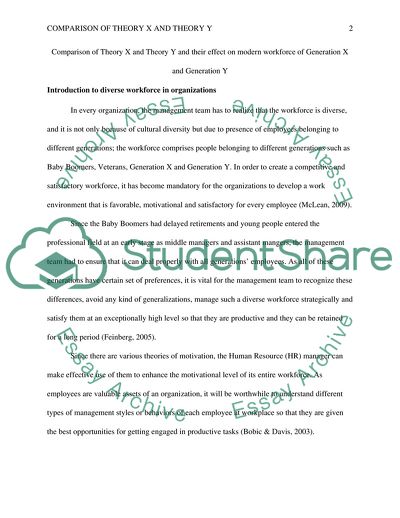Cite this document
(Comparison of Theory X and Theory Y and their Effect on the Modern Workforce Literature review Example | Topics and Well Written Essays - 1500 words, n.d.)
Comparison of Theory X and Theory Y and their Effect on the Modern Workforce Literature review Example | Topics and Well Written Essays - 1500 words. https://studentshare.org/sociology/1786813-compare-theory-x-and-theory-y
Comparison of Theory X and Theory Y and their Effect on the Modern Workforce Literature review Example | Topics and Well Written Essays - 1500 words. https://studentshare.org/sociology/1786813-compare-theory-x-and-theory-y
(Comparison of Theory X and Theory Y and Their Effect on the Modern Workforce Literature Review Example | Topics and Well Written Essays - 1500 Words)
Comparison of Theory X and Theory Y and Their Effect on the Modern Workforce Literature Review Example | Topics and Well Written Essays - 1500 Words. https://studentshare.org/sociology/1786813-compare-theory-x-and-theory-y.
Comparison of Theory X and Theory Y and Their Effect on the Modern Workforce Literature Review Example | Topics and Well Written Essays - 1500 Words. https://studentshare.org/sociology/1786813-compare-theory-x-and-theory-y.
“Comparison of Theory X and Theory Y and Their Effect on the Modern Workforce Literature Review Example | Topics and Well Written Essays - 1500 Words”. https://studentshare.org/sociology/1786813-compare-theory-x-and-theory-y.


